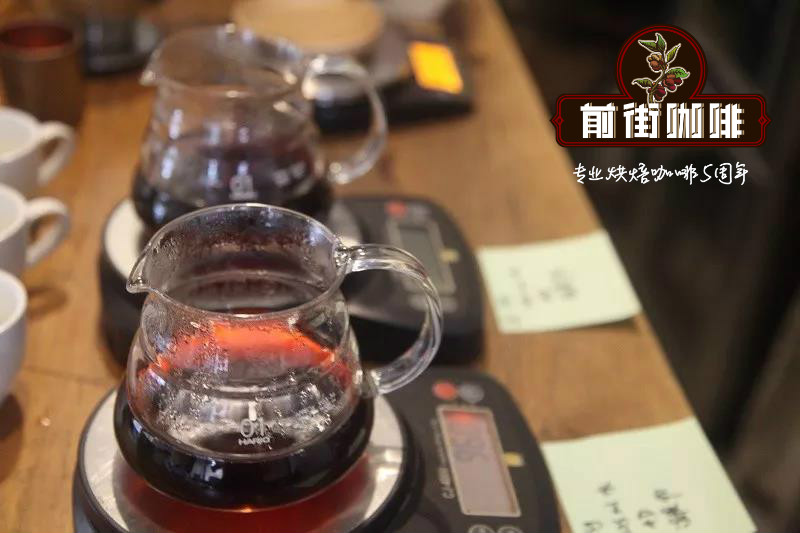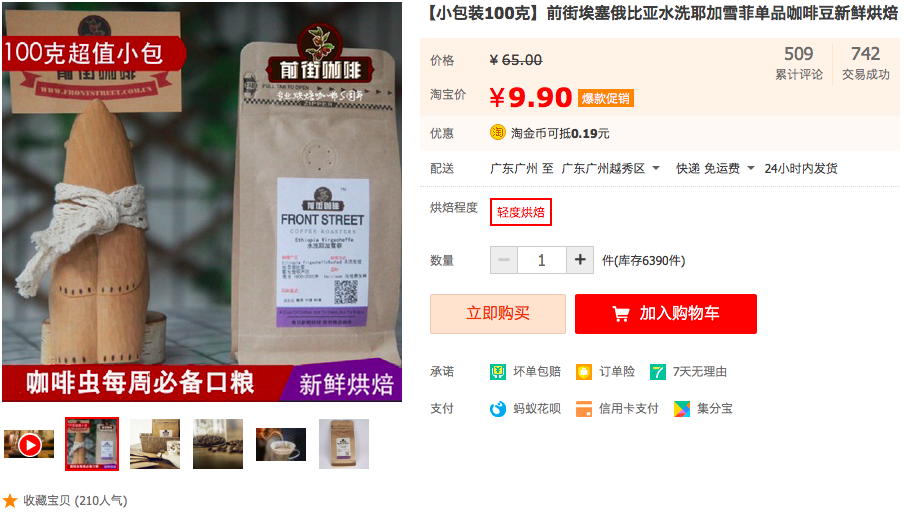"cold drink" has become a popular trend, and multi-brands compete for the domestic coffee market.

Professional coffee knowledge exchange more coffee bean information please follow the coffee workshop (Wechat official account cafe_style)
Some people in the industry say that the size of China's coffee market will at least triple in the next five years. Ready-to-drink coffee has a strong growth rate.
In the last month, news about coffee has appeared frequently in the major media. First, tea from Xi Cha and Nai Xue launched coffee products, and then Starbucks and Nestl é, the two major coffee market leaders, launched new series of products one after another. Luckin Coffee, who has the best capital in the coffee field, finally went to the IPO in the United States, and the latest news is that after Coca-Cola and Vitasoy announced the launch of coffee drinks, Nongfu Spring also joined the scuffle in this coffee market. After years of relatively steady development, 2019 seems to have become a new year for the resurgence of domestic coffee.
Competition
Multi-brand Luozi coffee market
The old rivers and lakes are speeding up the innovation.
The domestic coffee market seems to be accompanied by this long spring ushered in a new opportunity. In addition to the original competitors, a number of brands that do not belong to the field of coffee drinks have also announced their high-profile entry into the coffee market.
On March 22, Xi Tea announced a new online coffee drink, which was launched in four stores in Beijing, Shanghai, Guangzhou and Shenzhen. Since products such as soft European bags and pubs have just been launched, the launch has only attracted attention at the fan level. In fact, Naixue Tea, the leading new tea brand with Xi Tea, also launched its coffee product about a month ago, which also did not attract a lot of attention. At this time, the market does not know that this is just the prelude to the resurgence of coffee.
In April, a number of brands announced to enter the ready-to-drink coffee market. These include international beverage giant Coca-Cola and Hong Kong's well-known beverage brand Vitasoy. The latest news on May 9 is that Nongfu Spring, a domestic beverage brand, has also announced the launch of four new carbonated drinks with coffee ingredients.
In addition to these "outsiders", Starbucks and Nestl é, which have been in the coffee world for many years, have also moved frequently recently.
Starbucks is back on the road of product research and development after the surrounding products are more popular than coffee. In April this year, eight new series of "play ice tunes" were launched in one breath. Although outsiders believe that this is a cross-border product aimed at the domestic new tea market, there are still three coffee-based drinks. And its cold series then reappeared on the menu.
In February this year, Nestl é launched 24 new Starbucks coffee products, including coffee beans, ground coffee and capsule coffee, after officially partnering with Starbucks to establish a global coffee alliance in August last year. In April, Nestl é launched three new types of fruity cold-flavored coffee and opened a Beijing-flavor coffee flash store in Beijing.
Luckin Coffee, who has always been a "challenger", will also be listed in the United States. The company with the best capital in the coffee circle will have more capital to help it develop, and it has not forgotten to launch new products, including coffee.
Online, there are more domestic or imported coffee brands competing for this part of the market.
Prospect
The post-90s and post-1995 generation is the main force of consumption.
Afternoon tea may support a bigger market.
Many brands have entered the coffee world, and the old brands are busy consolidating them, which is bound to set off a new round of competition. Since Nestle coffee entered China, the domestic coffee market has developed for more than 30 years. However, surveys from institutions show that for coffee, China's market is far from saturated.
According to Luckin Coffee's prospectus, China's per capita coffee consumption in 2018 is 6.2 cups, compared with developed countries, China's per capita coffee consumption is only 1.6 per cent of that of the United States. The size of China's coffee market in 2018 is 56.9 billion yuan. With the improvement of Chinese people's living standards and the growth of awareness of coffee culture, coupled with the huge demographic dividend, may stimulate domestic coffee consumption. It is estimated that China's per capita coffee consumption will be 10.8 cups in 2023, and the coffee market will be 180.6 billion yuan.
A reporter from the Beijing Youth Daily learned that in addition to the per capita coffee consumption that still has a gap with that of Europe and the United States, the boundary of coffee in the Chinese market is still expanding.
According to the CBNData report, the post-90s and post-1995 generation are the main consumers of online coffee, with women accounting for more than 60%. Coffee consumption in second-tier cities is in strong demand, accounting for nearly half of the total, and the number of consumers in low-level cities is growing prominently.
In addition to new consumers and changes in spending habits, there is also an emerging market that supports the expansion of the overall coffee plate. This is the rise of domestic afternoon tea consumption. According to the survey data of an organization, at present, the proportion of passenger flow in catering enterprises in different periods of time, afternoon tea has reached 12%, obviously carving up the share of dinner. The lunch of some consumers is "rigid demand", and afternoon tea is "life extension". In this period of consumption, 52% of customers are used to eating together. Coffee is no longer just a refreshing drink at work, but a companion for cakes or snacks in casual meals.
Hot spot
Instant coffee is a new favorite.
Coffee "cold drink" has become a popular trend this year.
In fact, if you look back at the new coffee products launched by major brands this year, it is not difficult to find that whether they are ready-made products or packaging products, "cold drinks" have become what they have in common. Even the new instant products emphasize "cold extract" and say that they can be mixed with cold water.
According to the CBNData "report", online "cold drink" coffee has shown explosive growth in the past two years, especially among young people born in 1995 and 1990s, who have become the main consumers of "cold drink" coffee with a higher consumption growth rate than that of other generations. Even young people who do not let go of "cold drinks" in winter should be even more presumptuous in the warm and warm seasons of spring and summer, and the same is true when it comes to drinking coffee.
In addition, in addition to cold water brewing coffee, "milk extract" coffee and "fruit extract" coffee have also become a trend, with online "milk extract" coffee growing at an annual rate of 89%, a significant increase. In fact, temperature is only one of the preferences of young consumers. According to market research firm Mintel, 19% of the world's new coffee products in 2017 are ready-to-drink iced coffee. Ready-to-drink coffee has grown by 31% in the past two years and will reach $2.643 billion by 2023, according to market research firm Mordor.
Ready-to-drink coffee can make the younger generation feel relaxed and awake more quickly-especially in the morning and afternoon, as brands strive to bring forth new ideas to attract young consumers. "the proportion of ready-to-drink iced coffee has increased because young consumers prefer the refreshing taste of the formula." "ready-to-drink coffee has also proved to be a more innovative formula that has an advantage over other hot-drink coffee and gives manufacturers more room to play," Mintel wrote in the report. " Mintel predicts that the Chinese market for ready-to-drink coffee will grow at an average annual rate of 20% over the next five years, squeezing out more freshly ground coffee market. (reporter Zhang Xin)
Important Notice :
前街咖啡 FrontStreet Coffee has moved to new addredd:
FrontStreet Coffee Address: 315,Donghua East Road,GuangZhou
Tel:020 38364473
- Prev

Coffee has become a "cross-border medicine", and the Internet in the fashion world has quickly opened stores to sell coffee.
Professional coffee knowledge exchange more coffee bean information please follow Coffee Workshop (Wechat official account cafe_style) recently, women's wear and accessories brand MARNI has crossed into the coffee field, its MARNI MARKET CAF flash store will be unveiled in Chengdu Ocean Pacific from May 11 to 19. Marni belongs to the Italian tide card, by designer Consuelo Castiglioni in 19
- Next

Blue Mountain Rose Summer 6.5% discount package! Wash Yega & Brazil 9.9! Hang up 19.9 ears in season! Free mail
Professional coffee knowledge exchange more coffee bean information please follow the coffee workshop (Wechat official account cafe_style) 520 true feelings discount! This special event [Qianjie Coffee] will offer you two kinds of selected ears, five kinds of concessionary rations beans and seven kinds of fine beans! A 20% discount for all single beans! There is also a blue mountain + rose summer 6.5% discount package! The gift is honorable! Before hanging up the ear
Related
- What effect does Italian American coffee with filter paper have? Will coffee taste better if it is put on filter paper at the bottom of the powder bowl?
- What is the color difference in coffee beans? What are the characteristics of honey processed coffee beans? Why are the anaerobically treated coffee beans uneven in color?
- How does novice Xiaobai quickly get started and make coffee? Newbies learn to make coffee by hand and share the specific steps and process process!
- Costa tea has a shelf life of 100 years?! Expert: Unable to verify
- It's a huge uproar! American milk addition was rejected by Manner employees?!
- Mocha pot coffee bean recommendations| How fine and how much powder should be used for grinding? What parameter ratios do I need to use to make milk with Mocha pot coffee?
- What are the characteristics of the world's top ten coffee beans treated with Costa Rica honey? How to make black honey kadura from Tarazhu Pilon Processing Plant taste good?
- How to make deep-roasted coffee? What grinding water temperature does authentic Jamaica Blue Mountain No. 1 coffee use to brew it well?
- Selected high-grade rose summer coffee flavor tasting guide Why Panama rose summer has the aroma of flowers and fruits
- What equipment does a novice Xiaobai need to buy to learn to make coffee? Filter cup electronic scale bean grinder manual flushing pot purchase guide

